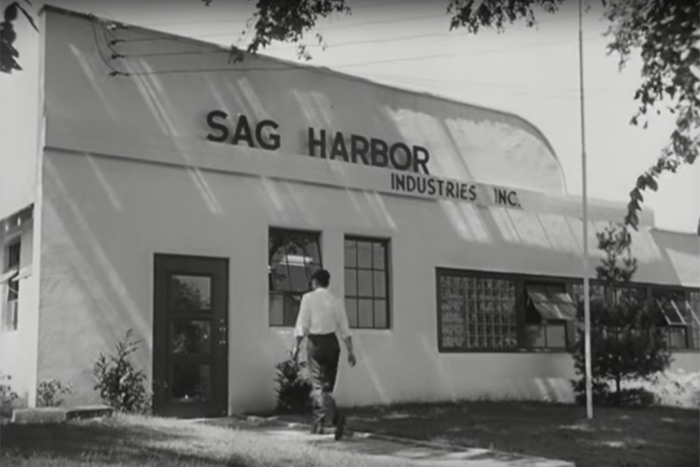National Archives Releases 1950 'Sag Harbor, U.S.A.' Video

Last month, the United States National Archives released a 1950 video featuring Sag Harbor as a “center for light industry” and comparing the village as manufacturing center to its history as a whaling hub. It was part of a series of films relating to the American way of life.
As explained in the scope and content notes, “The footage covers stories relating to the American family, working women, unions, education, war veterans and the will for peace.”
Clearly a product of the post World War II era, the film begins by noting, “When most Japanese think about industry in the United States, pictures like these come to their minds: vast factory cities with plants extending as far as the eye can see, thousands upon thousands of men, whole armies of workers clogging the streets, going to and from work in shifts; three shifts a day around the clock…” but, it continues after more descriptions of the large U.S. industrial picture, the country also has another “side of the picture”—small towns.
Introducing Sag Harbor, it notes, “It’s only a small factory. Light, airy, quiet, employing a handful of workers. The whole factory is hardly larger than a big house. It is not in the middle of a vast, smoke-clogged industrial metropolis, but in the tree-lined outskirts of a small American town—a seaport community named Sag Harbor in the state of New York.”
It goes on to compare Sag Harbor’s historic ties to the sea with the villages in Japan, and then talks of the village’s whaling past and its success adjusting to the changing times, after “oil from the ground replaced oil from the sea.”
Throughout the film, which talks of local industry and innovation, we see idyllic images of Sag Harbor, including some locations and businesses that remain and others long since closed. Among them, the Old Whalers Church, The Whaler’s Inn, Oakland Cemetery, the Broken Mast Monument, The Ideal stationary store, Long Wharf, Sag Harbor Cinema, the Whaling Museum and several historic Main Street homes that still stand today.
And though much has changed since this film was produced, one fact continues steadfast and resolute as an integral part of Sag Harbor’s fabric. As the narrator says, “Yes, the days of whaling are gone, but not forgotten.”
The 35mm black and white film was originally created by the Department of Defense, Department of the Army and Office of the Chief Signal Officer.









